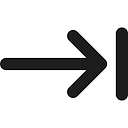Getting MVP for Your New Startup or Product; Prioritising Features.
As a new #startup, there will always be tons of ideas. Here’s a way to prioritise your features, divide all your ideas into “Pain killers, Vitamins& Candy”. Then, categorize all into #customer gains or pains.
Pain Killers are “need-to-have”, solves unmet customer needs, users want to use and will pay a definite price to use.
Vitamins are “nice-to-have”, improves an existing solution, users should use and will only pay for after getting pain killers.
The world is moving from general solutions to products that are customized and solve specific problems in a well tailored experience — customer-centric solutions. By evaluating a whole picture and bringing in all facets of the decision can help you understand how your product fits in your customer’s lives.
How do you motivate customers to switch behaviour or how do you situate your product into existing behaviour? You have to classify them into two forces with these questions;
Existing behaviour;
1. What do they “really like” about the current behaviour that will keep them from switching?
2. What are they “worried about” that will stop them from switching?
New behaviour;
1. What situations or activities will “motivates them” into switching?
2. What part or “strong element” of the new idea is most appealing to them?
Users are less concerned about the functionality but satisfaction they derive using your product. They expect these satisfaction to drive all your functionalities and features. Satisfaction bring excitements and that is what drives virality and product growth.
Whether your product is a painkiller or a vitamin, it must address the highest priority customer needs and the only way to get that done is to GO OUT & MEET YOUR CUSTOMERS.
Customer gains make users happy, it saves them money, time or effort on their existing behaviour. They are either gains they require a solution not to function without, or gains they expect from a solution even if it could work without them, desired solutions but not expected or unexpected gains that blow their mind.
Example is a finance solution; every user knows that it requires a solution to move money into the app and would expect security with advanced expectation of biometrics, desire one that solves their financial need in a particular way (maybe an app that will eliminate their queues at ATM) and a candy (in-app actions that blows their mind). It takes an understanding of your user journey to be able to situate all these.
Customers want to ease their pains; that annoying behaviour or troubling experience. What is blocking them to achieving their “goals” or get their job done. They might be undesired costs or situations, negative emotions, unwanted risk or even bad UX or customer support.
They are largely social, functional and emotional to users and their unique experience. Functional pains or gains are from activities customers are looking to complete e.g. getting paid (without queue), getting from A to B (swifter, safer and in comfort). Those are what they want to do and with how they will like it to be done. The first is the pain they want to kill while in parenthesis is the vitamin that makes the gain.
Social pains or gains are based on third party’s perception of how they achieve their activities. Users want “others” to see how much they can control the solution you’re offering and how your product make them capable. Products should be built to make them feel secured socially.
Emotional pains or gains are based on users internal esteems; how they feel good while solving their problems, the internal pride in wearing an expensive underwear no one might see.
To win, one must design a product that appeal to all these three classes.
Identify user’s current situation and know where you want to take them. Help users understand themselves better, that way your product can easily be situated into their behaviour. People always want to be a better version of themselves. Sell that! sell aspirations.
Users want to go from being frustrates, dissatisfied, neutral to being satisfied or better being delighted. That exactly is what should drive the progression of your ideas and functionality. What feature is best to take them through that route!
Create an internal and external Product survey for your team with questions that constantly review your user expectations, risks you are eliminating, social/esteem satisfactions. Mine data on how you surprise and delight them with memorable interactions while using your product.
Getting users perception about a product can be as easy as asking them how they feel if they have the feature and also how they feel “if they do not have the feature”. Don’t rely on their short answers, watch their emotions as they tick the boxes, their phrasing and use of verbs
Write clear questions e.g. if sending money across continents are instant, how would you feel? Let them feel great about ranking needs and how they will want it solved.
Great products are built with great customer obsession. Define problems, seek solutions, create, spin hypothesis, test, test, survey, survey, create… rinse and repeat.
